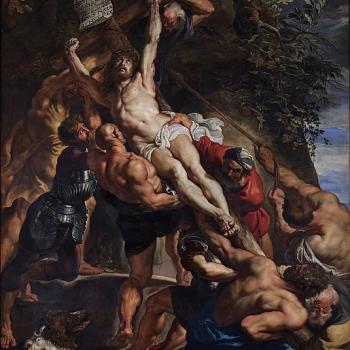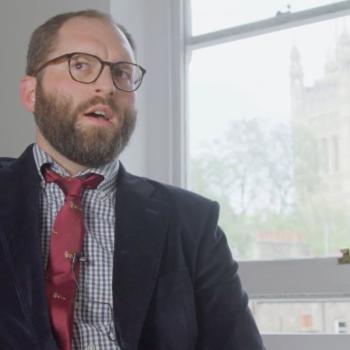We have blogged about the way Coptic Christians in Egypt use tattoos as a way to identify themselves as Christians to their Muslim neighbors. How else can Islamic mobs know whom to attack, since the Copts look the same and speak the same language as any other Egyptians? The Coptic Christians are in your face about it, tattooing a cross on their wrists or arms for all to see.
It turns out that some Coptic tattoo artists migrated in the Middle Ages to Jerusalem. It became a custom for medieval pilgrims to the Holy City to get a tattoo as an indelible souvenir.
To this very day, the Razzouk family has a tattoo business in Jerusalem, one that has been handed down generation after generation since the year 1300! You can go there to get a tattoo of a Jerusalem Cross, or St. George & the Dragon, or other traditional designs that are first stamped on your skin by templates that are centuries old.
Read the report, excerpted after the jump, and go to the link to see the tattoos.
From Anna Felicity Friedman, Inside the World’s Only Surviving Tattoo Shop For Medieval Pilgrims | Atlas Obscura:
In Jerusalem’s Old City today, you can find a uniquely obscure historical relic—the sole surviving pilgrimage tattoo business, Razzouk Ink. It’s a place where ancient artifacts meet contemporary machines, rich history intersects with modern technology. Twenty years ago, as a budding tattoo scholar, I first read about the adventures of Christian pilgrims to the Holy Land and the indelible souvenirs they had inscribed under their skin. I never expected to one day get the opportunity to follow in their footsteps and receive my own.
Just inside the Jaffa Gate in Jerusalem’s Old City, you can duck down the second side street to the left, as I did, finding respite from the beating sun and leaving the bustle of the crowded main square. A tiny shop, almost dwarfed by its prominent sign, lies across a quiet cobblestone road. If you didn’t know anything about the incredible, centuries-long history of the family who runs this particular shop, the sign’s tagline might cause you to do a double-take: “Tattoo With Heritage Since 1300” it reads.
For 700 years the Razzouk family has been tattooing marks of faith. Coptic Christians who settled in Jerusalem four generations ago, the family had learned the craft of tattooing in Egypt, where the devout wear similar inscriptions. Evidence of such tattoos dates back at least as far as the 8th century in Egypt and the 6th century in the Holy Land, where Procopius of Gaza wrote of tattooed Christians bearing designs of crosses and Christ’s name. Early tattoos self-identified indigenous Christians in the Middle East and Egypt. Later, as the faithful came to the Holy Land on pilgrimage, the practice expanded to offer these travelers permanent evidence of their devotion and peregrination.
Upon entering Razzouk Ink, you will discover a blend of stone walls and exposed beams lending antique character to the space, while the sterile tattoo parlor hides behind a wall. A museum-like case holds family antiques, and an exhibition of pictures on the walls offers glimpses into the family’s past.
Family lore dates the Razzouk’s involvement in this cultural practice to 1300, starting first in Egypt among Coptic (Orthodox) Christians and later in the Holy Land for Christians from a variety of backgrounds. “My ancestors were always in association with the church therefore it might be they learned this practice from there,” says Wassim Razzouk, the current family tattooer.
[Keep reading. . .]












